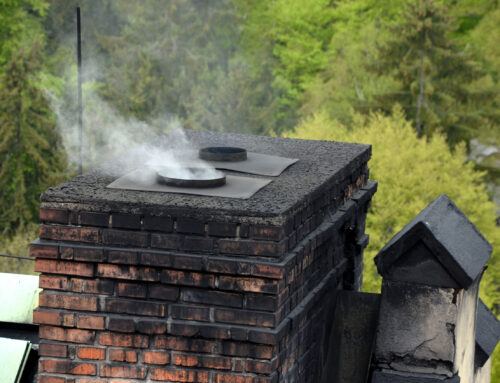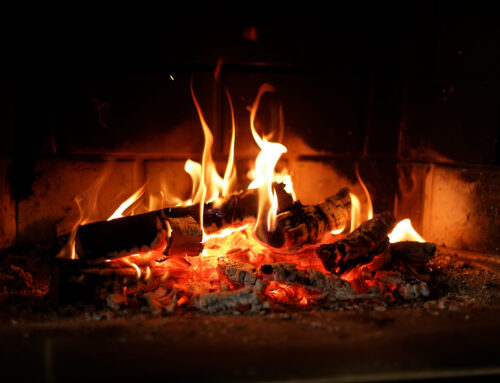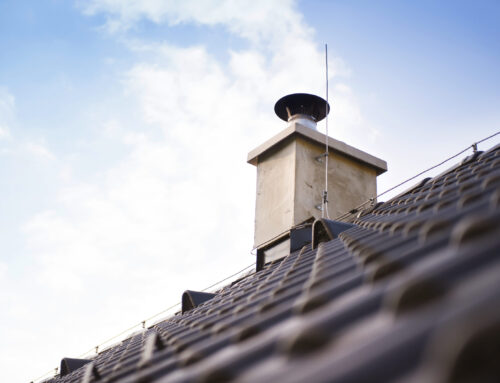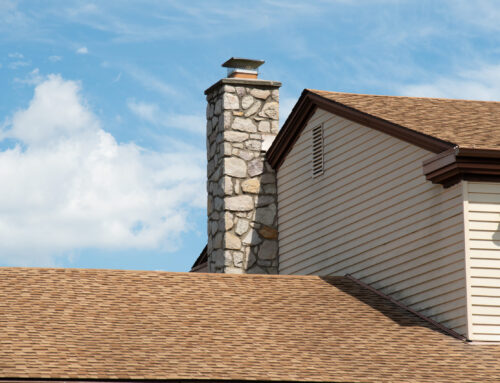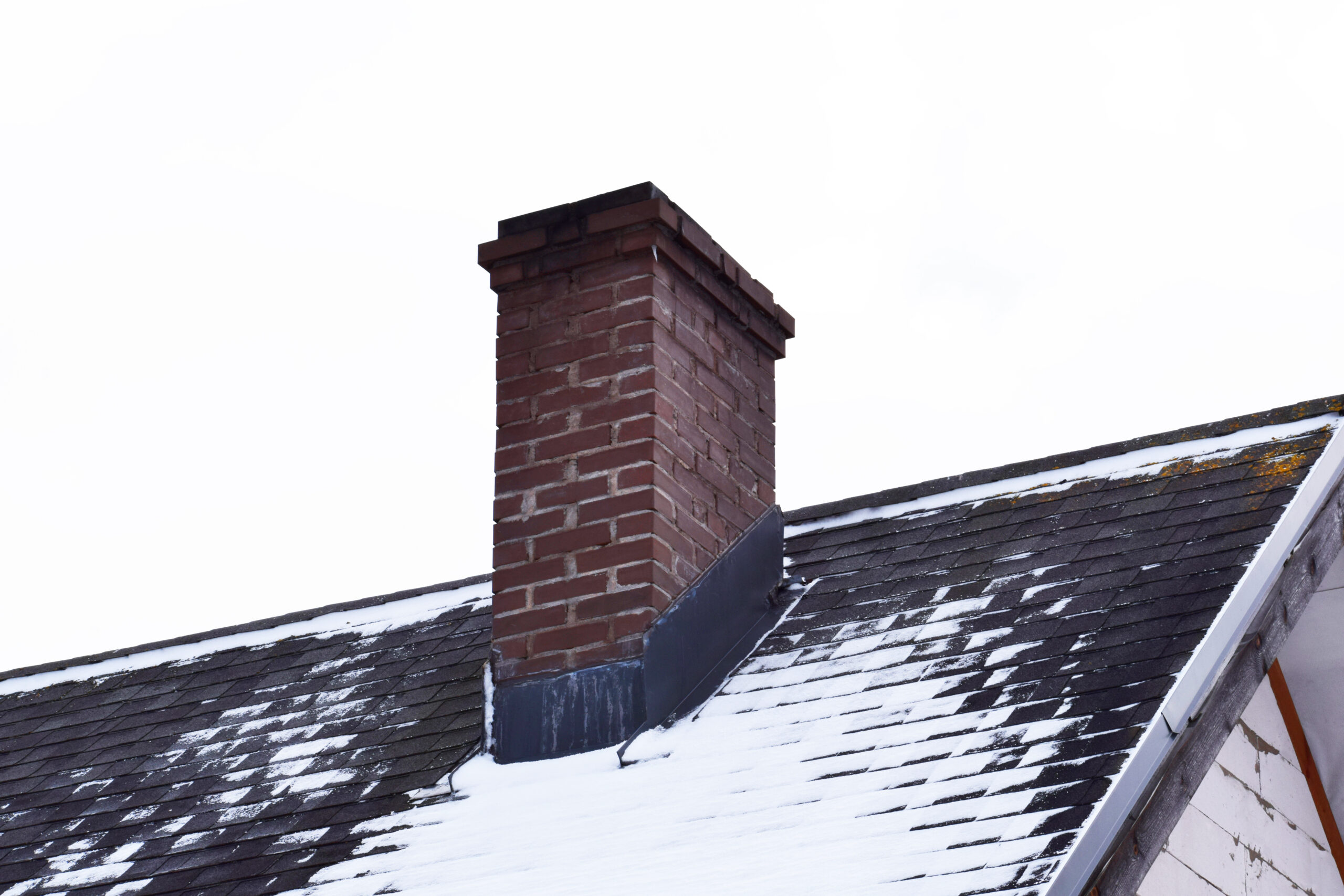
Chimney Smells Kenosha: What You Need To Know This Winter
Chimney smells Kenosha is a common winter search for homeowners who suddenly notice a harsh, campfire-like odor or a damp, musty scent drifting from the fireplace. If your living room smells worse when the heat kicks on or the wind shifts, you are not alone. In this guide, Elite Chimney explains why winter makes chimney odors worse, the most common causes like creosote buildup and moisture, and the proven fixes that stop the stink for good. If you are ready to breathe easy again, book an inspection with Elite Chimney today.
Why Do Chimneys Smell More in Kenosha Winters?
Kenosha winters bring cold snaps, lake-effect moisture, and strong winds. This local climate can push outside air down your flue, lock odors inside the house, and drive icy water into masonry. When you add tightly sealed windows and powerful exhaust fans, your fireplace can start acting like an intake vent rather than a chimney. The result is a mix of smoky, sour, or earthy smells that seem to appear out of nowhere.
Understanding the triggers helps you choose the right fix. Elite Chimney sees a few repeating patterns across Southeastern Wisconsin and Northeastern Illinois during the coldest months. You can use the list below to narrow down the problem you are facing.
The Top Odor Sources: Creosote, Moisture, and Draft Issues
Creosote Buildup
Creosote is the tar-like byproduct of wood smoke. It sticks to flue walls, soaks up odors, and releases a strong, smoky, sometimes sour smell. In winter, cold flue tiles and slow, smoldering fires create more creosote than hot, fast burns. If you notice the smell gets stronger after a storm or when the fireplace is closed, creosote is a likely culprit.
Common causes include burning unseasoned wood, choking the fire for long burns, and not warming the flue before small fires. Beyond odors, creosote is flammable and raises the risk of a chimney fire. Elite Chimney’s certified sweeps remove this buildup and check for damage so you stay safe and smell-free.
Moisture Intrusion and Mildew
Moisture turns clean soot into a sticky, smelly mess. Snowmelt, ice, and wind-driven rain can enter through a missing or damaged cap, a cracked crown, tired mortar joints, or loose flashing. Once inside, moisture feeds mildew and carries odors into your living space. If the smell is damp, musty, or earthy, water is likely getting in.
Kenosha homes often have brick or stone chimneys that breathe. Masonry is porous, so it absorbs and releases water. Without proper waterproofing, that cycle speeds up odor problems and can lead to spalling bricks and chimney leaks. Elite Chimney repairs the leaks and applies professional-grade water repellent to stop the cycle.
Downdrafts and Negative Pressure
A house needs makeup air to replace air that is exhausted by kitchen hoods, bath fans, clothes dryers, or high-efficiency furnaces. In tight homes or on windy days, your chimney can become the easiest path for replacement air. When that happens, stale chimney air, creosote odors, and even ash can drift into the room. If the smell worsens when the dryer or range hood runs, this is your sign.
Animals and Nesting Material
Without a cap, birds, squirrels, and raccoons can enter a flue. Nesting materials and droppings create strong odors, and a trapped animal can cause a foul, persistent smell. Even after removal, nests can block venting and hold odors until they are cleaned out. A stainless steel cap with screening is the best prevention.
Gas Fireplace and Gas Log Odors
Gas appliances should not smell. A faint dusty smell during the first use of the season can be normal as dust burns off, but a persistent sulfur or rotten egg scent is not. If you suspect a gas leak, leave the area and contact your gas utility right away. For normal maintenance and performance checks on gas fireplaces and gas log sets, Elite Chimney provides inspection and cleaning services.
Quick At-Home Checks Before Your Next Fire
You can do a few safe checks to narrow the source of chimney smells. Do not climb on your roof in winter. If anything seems unsafe, stop and book a professional inspection with Elite Chimney.
- Open the damper fully and sniff near the firebox. If the odor grows when the damper is open, air is likely moving down the flue.
- Run the range hood or dryer. If the smell increases, negative pressure or a downdraft is likely.
- Shine a flashlight inside the firebox. Look for heavy soot flakes, sticky deposits, or damp patches.
- Check the hearth for fine, black dust. Soot on the hearth points to airflow from the chimney to the room.
- Note weather patterns. Odors that spike after snow or rain often point to moisture entry.
Proven Fixes for Chimney Smells in Kenosha Homes
Professional Chimney Cleaning and Inspection
A certified sweep is the fastest route to fresher air. Elite Chimney follows industry standards to remove creosote, clear obstructions, and inspect the flue, smoke chamber, crown, and flashing. A thorough sweep controls odor and restores safe airflow.
- Remove creosote and soot that trap odors
- Verify damper function and condition
- Document cracks, gaps, or loose mortar that can pull in moisture
- Check for animal activity and nesting material
Most homes benefit from an annual cleaning before winter. If you burn often or use softwoods, consider more frequent service. When you search chimney smells Kenosha, this should be step one.
Install a Chimney Cap and Top-Sealing Damper
A stainless steel cap with a spark screen keeps out rain, snow, animals, and debris. A top-sealing damper seals the top of the flue when not in use, which blocks downdrafts and traps conditioned indoor air where it belongs. Together, these upgrades make a big difference in both odor and efficiency.
- Stops rain and snow from soaking soot and mortar
- Prevents animals from entering the flue
- Reduces cold air spilling into the fireplace
- Lowers heating costs by sealing at the top
Stop Water Leaks at the Source
Water is odor’s best friend. Elite Chimney identifies and repairs leak paths, then applies breathable waterproofing so masonry can release vapor without letting liquid water in.
- Rebuild or resurface a cracked crown to shed water
- Seal or replace failing flashing where the chimney meets the roof
- Tuckpoint missing or crumbled mortar joints
- Apply professional masonry water repellent
Reline the Flue if It Is Damaged or Mismatched
A damaged clay liner or a flue that is too large for the appliance can cause poor draft, slow smoke, and more creosote. A stainless steel liner matched to your fireplace or stove improves draft, reduces odor, and increases safety. Elite Chimney installs and maintains liners for wood and gas appliances.
Improve the Smoke Chamber and Firebox
Rough smoke chamber walls and gaps in the firebox can hold soot and leak odors. Parging the smoke chamber smooth and repairing firebrick or refractory mortar reduce turbulence and soot sticking, which cuts odor at the source.
Balance House Air Pressure and Draft
If negative pressure is the main problem, you can improve airflow by changing how your house breathes.
- Crack a nearby window an inch while burning to add makeup air
- Avoid running kitchen hoods and bath fans during a fire
- Consider an outside air kit for a wood stove or insert
- Discuss ventilation changes with an HVAC professional if issues persist
Burn Smarter to Reduce Odors
Small changes in how you build and tend a fire can lower creosote and smells.
- Burn only seasoned hardwood with moisture content under 20 percent
- Use a top-down fire to light cleaner and heat the flue faster
- Do not choke the air supply for long, smoldering burns
- Warm a cold flue by holding a lit rolled newspaper near the damper for a minute
- Empty ash regularly, but leave a thin insulating layer for easier starts
Neutralize Residual Odors After Repairs
Once the root cause is fixed, you can speed up odor cleanup. Place bowls of baking soda or activated charcoal in the firebox with the damper closed. Vacuum the hearth and wipe surfaces with a mild cleaner. These methods help only after you address creosote and moisture.
Seasonal Prevention Checklist for Kenosha Homeowners
Use this simple schedule to keep chimney smells kenosha at bay all year.
- Early Fall: Book a cleaning and inspection with Elite Chimney. Install or check your cap and damper. Stock dry, seasoned firewood.
- First Freeze: Check for leaks in the attic around the chimney. Look for water stains after the first snow.
- Midwinter: Watch for odor changes during storms or strong winds. Burn hot, clean fires and keep ash to one inch.
- Thaw Cycles: After a warm spell, sniff test the firebox. Musty smells can signal a new leak. Call for a check if you notice damp spots.
- Spring: Schedule any needed masonry repairs and waterproofing before summer storms.
Why Local Homeowners Choose Elite Chimney
Elite Chimney LLC is based in Kenosha, Wisconsin, and serves Southeastern Wisconsin and Northeastern Illinois. Our certified chimney sweeps focus on safety, value, and long-lasting repairs. We keep overhead low so you get expert service at a competitive price. When it comes to chimney smells kenosha, our team knows the local climate and the most effective solutions.
Services Offered by Elite Chimney
- Chimney Cleaning and Inspection
- Chimney Liners
- Chimney Leaks
- Chimney Caps and Dampers
- Chimney Rebuilding
- Gas Fireplaces and Gas Log Sets
- Fireplace Refacing
Service Areas
Elite Chimney provides reliable service across Wisconsin and Illinois.
- Wisconsin, Kenosha County: Kenosha, Pleasant Prairie, Bristol, Salem, and nearby areas
- Wisconsin, Racine County: Racine, Mount Pleasant, Waterford, and more
- Illinois, Lake County: Zion, Waukegan, Gurnee, Lake Forest, Highland Park, Libertyville, and surrounding cities
Certified and Local
Elite Chimney LLC is a Certified Chimney Sweep. That credential signals training, proper tools, and adherence to industry standards. From cleaning to rebuilding, you get work that meets code and keeps your home safer and fresher.
Frequently Asked Questions About Chimney Smells in Kenosha
Why does my fireplace smell worse when it is windy?
Wind across the top of your chimney can create pressure differences that push air down the flue. If creosote or moisture is present, that air carries odor into the room. A well-fitted cap and top-sealing damper often reduce this issue.
Is the smell dangerous?
Odor itself is a nuisance, but the source can be risky. Creosote buildup raises chimney fire risk. Moisture can damage masonry. If you smell gas or rotten egg odor, leave the area and contact your utility. For wood and masonry odors, schedule a cleaning and inspection to remove hazards and track down the cause.
Can I fix chimney smells with deodorizer alone?
Deodorizers only mask odors. The real fix removes creosote, stops water intrusion, and improves draft. Elite Chimney focuses on the source, then we advise on safe odor control while the masonry airs out.
How often should I have my chimney cleaned?
Most households benefit from annual cleaning and inspection. If you burn daily or use softwoods, plan for more frequent service. When in doubt, a quick inspection will tell you if creosote has built up enough to cause odor or safety concerns.
Do gas fireplaces cause chimney smells kenosha?
Gas units should not create strong odors. A dusty smell on first use can be normal. Persistent smells suggest venting issues, residue buildup, or a leak. For safety, have a professional inspect the system. If you suspect a gas leak, call the gas utility right away.
Will waterproofing stop musty chimney smells?
Waterproofing is key, but it works best when paired with repairs. First, fix the crown, flashing, and mortar joints. Then apply a breathable repellent. This combo keeps liquid water out while allowing vapor to escape, which prevents trapped moisture and odors.
What is the fastest way to reduce odor today?
Close the damper if the fireplace is not in use, place bowls of baking soda or activated charcoal in the firebox, and avoid running exhaust fans that could pull air down the chimney. Then schedule a professional sweep to remove creosote and identify any leaks.
When to Call Elite Chimney
If you notice persistent smoky or musty smells, see soot flakes or damp stains, or experience downdrafts when appliances run, it is time to call. Elite Chimney makes it easy to book service and get fast answers. We will inspect, clean, and recommend repairs that last through Kenosha winters.
About Elite Chimney LLC
Address: 2100 82nd Street, Kenosha, WI 53143
Phone: 262-358-4010
Email: contact@elite-chimney.com
Website: https://elite-chimney.com
Elite Chimney is proud to protect homes across Kenosha County, Racine County, and Lake County, Illinois. If chimney smells kenosha is on your mind, our team is ready with certified expertise, clear pricing, and a friendly approach.
Stop the Stink Today
You do not have to live with smoky, sour, or musty fireplace odors this winter. Whether the cause is creosote, moisture, or a stubborn downdraft, Elite Chimney has proven solutions. Schedule your chimney cleaning and inspection today, restore a fresh indoor environment, and enjoy your fireplace with confidence all season long.


